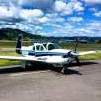What does an intake leak look like in a turbo?
-
Members Online
- 201Steve
- Lima Zulu
- bluehighwayflyer
- rklems
- Marc_B
- Hangar_46
- LOCOLJ
- M Terry
- atpdave
- Brian Coate
- KSMooniac
- Scott Ashton
- 201er
- Schllc
- Justin Schmidt
- 67 m20F chump
- Graf_Aviator
- MikeOH
- Kelingreen
- Dick Denenny
- Nico1
- Mooney-Shiner
- Jackk
- IvanP
- redbaron1982
- hammdo
- DRH4249
- Pstone
- Parker_Woodruff
- GBFlyer
- 00-Negative
- Jakes Simmons


Recommended Posts